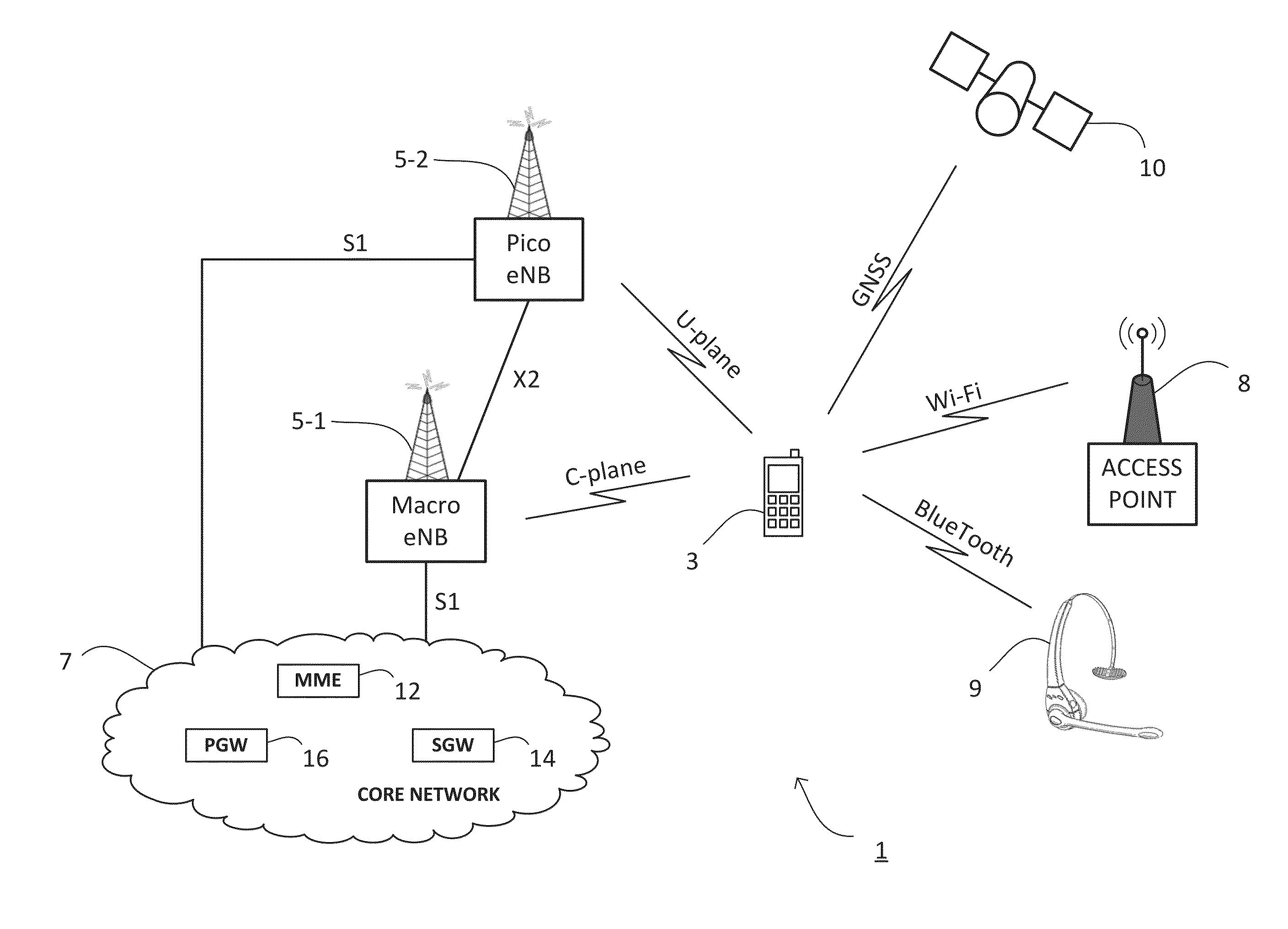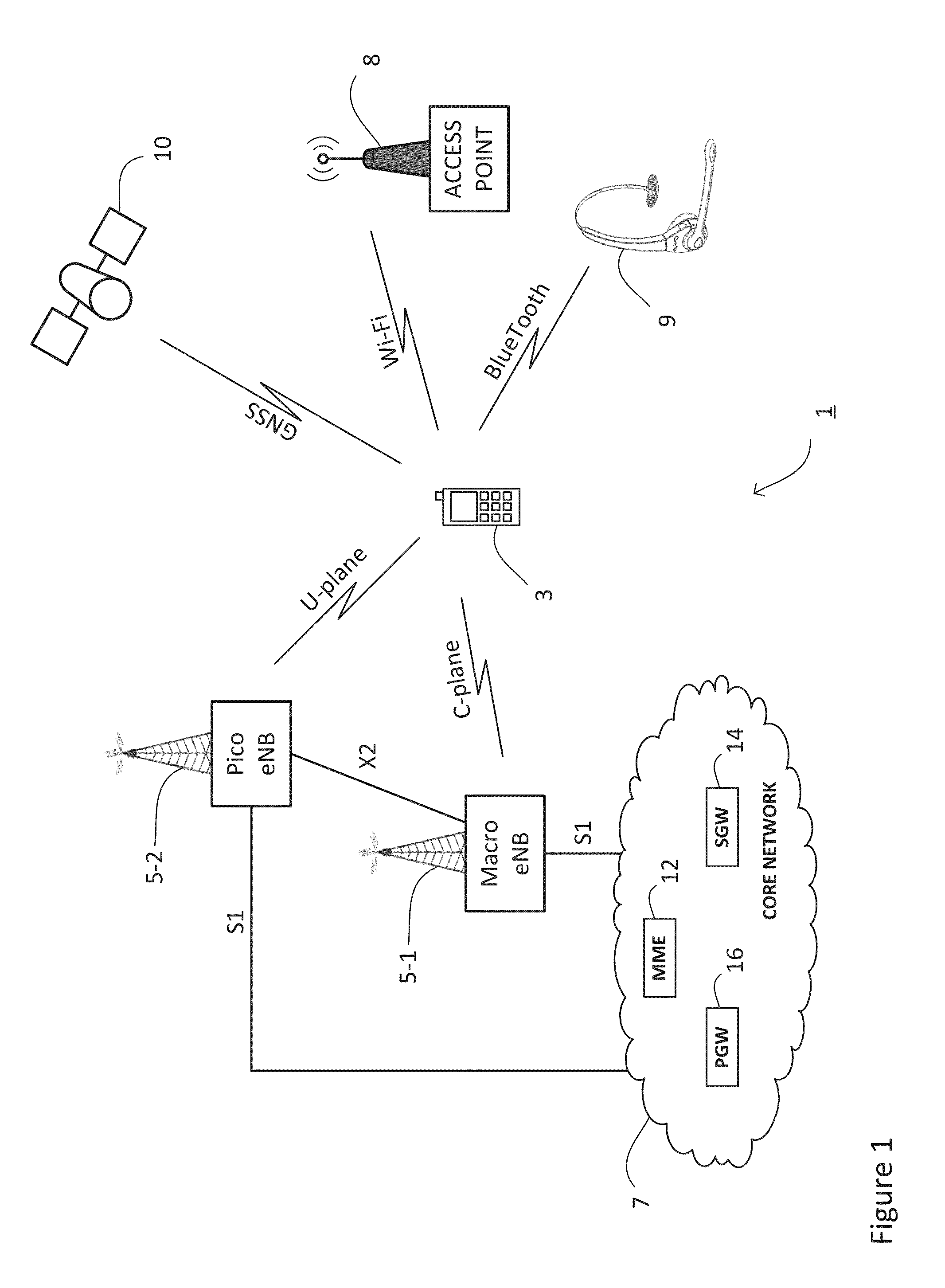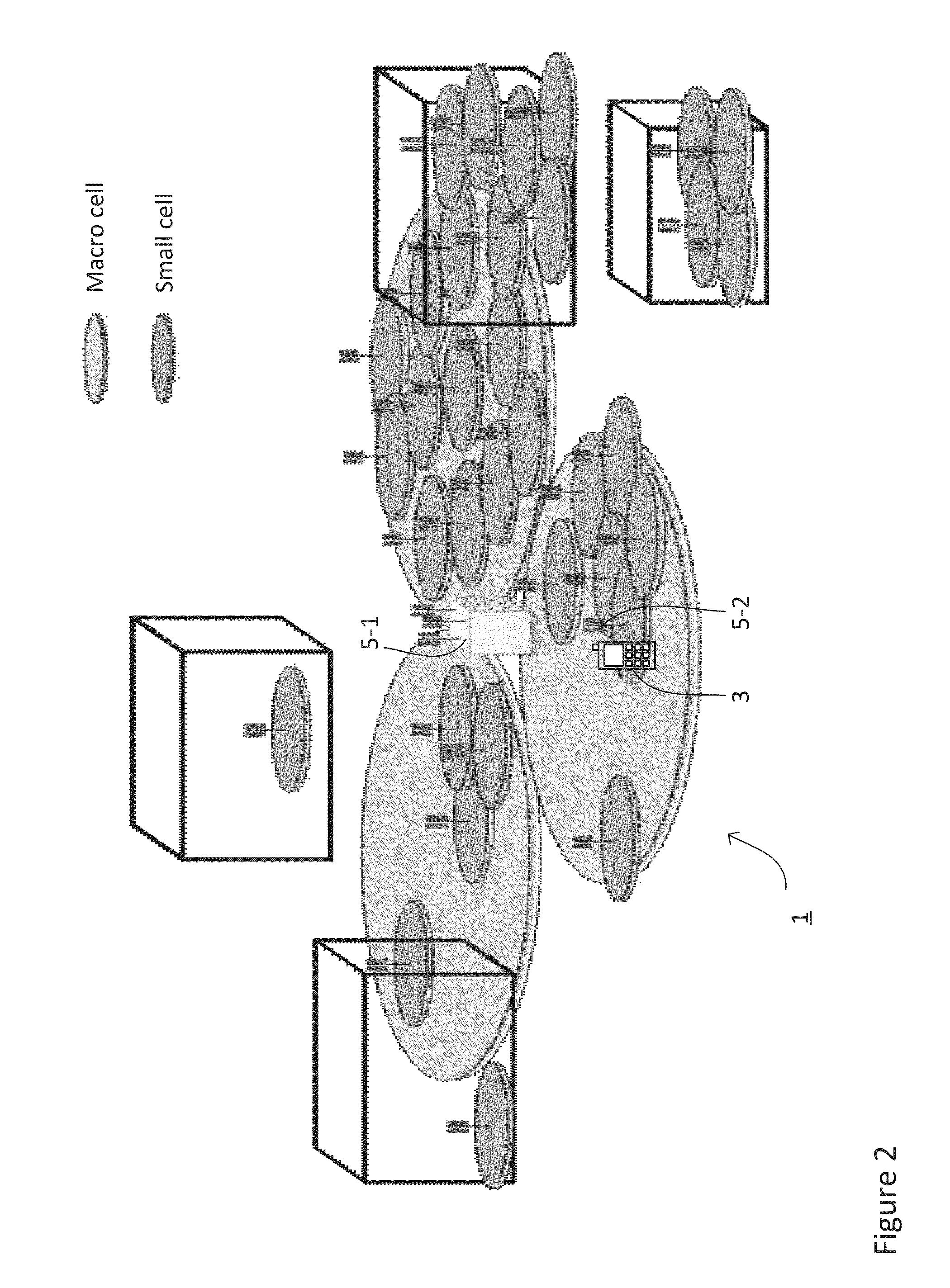Communications system
a communication system and radio access technology, applied in the field of radio access networks, can solve the problems of undesired interference to (or suffer undesired interference), undesired interference to (or suffer undesired interference) the transmission of these mobile devices, and the failure of corrective measures made by the base station to improve the interference perceived by the mobile device, etc., to achieve the effect of alleviating radio interference and reducing interference in the communications network
- Summary
- Abstract
- Description
- Claims
- Application Information
AI Technical Summary
Benefits of technology
Problems solved by technology
Method used
Image
Examples
Embodiment Construction
Overview
[0066]FIG. 1 schematically illustrates a mobile (cellular) telecommunication system 1 in which users of mobile devices 3 (for example mobile telephones) can communicate with other users via each of a plurality of base stations 5-1, 5-2 and a core network 7. In the system illustrated in FIG. 1, the base station 5-1 is a macro base station and the base station 5-2 is a pico base station (or other low-power node). Further base stations (not shown) might operate according to different standards, such as the Wideband Code Division Multiple Access (W-CDMA) or the GSM (Global System for Mobile Communications) EDGE (Enhanced Data rates for GSM Evolution) Radio Access Network (GERAN) standards or the like.
[0067]The core network 7 comprises a mobility management entity (MME) 12, a serving gateway (SGW) 14, and a PDN gateway (PGW) 16.
[0068]Each base station 5 operates at least one base station cell, each having a number of uplink and downlink communications resources (channels, sub-car...
PUM
 Login to View More
Login to View More Abstract
Description
Claims
Application Information
 Login to View More
Login to View More - R&D
- Intellectual Property
- Life Sciences
- Materials
- Tech Scout
- Unparalleled Data Quality
- Higher Quality Content
- 60% Fewer Hallucinations
Browse by: Latest US Patents, China's latest patents, Technical Efficacy Thesaurus, Application Domain, Technology Topic, Popular Technical Reports.
© 2025 PatSnap. All rights reserved.Legal|Privacy policy|Modern Slavery Act Transparency Statement|Sitemap|About US| Contact US: help@patsnap.com



